Wine tourism in the Canary Islands
Wine Tourism in the Canary Islands: destination information, how to move in the Canary Islands, Top Wine Experiences, Itineraries and tours, tips and secrets.
The Canary Islands, an archipelago located off the northwest coast of Africa, are known for their stunning landscapes, unique microclimates, and rich cultural heritage. Composed of seven main islands, each with its own character, the Canary Islands offer a diverse range of experiences, from volcanic mountains and black sand beaches to lush forests and arid plains. Their volcanic soils, combined with the islands' mild, sunny climate, create the perfect conditions for viticulture, making the Canary Islands a hidden gem in the world of wine. Renowned for producing wines with distinct flavors and strong ties to tradition, the islands boast native grape varieties and unique winemaking techniques that reflect their volcanic origins and centuries of history.
If you're already familiar with the Canary Islands and their wines, feel free to skip this guide and directly start your search for Experiences in the Canary Islands on Winedering.com .
The Destination: Canary Islands
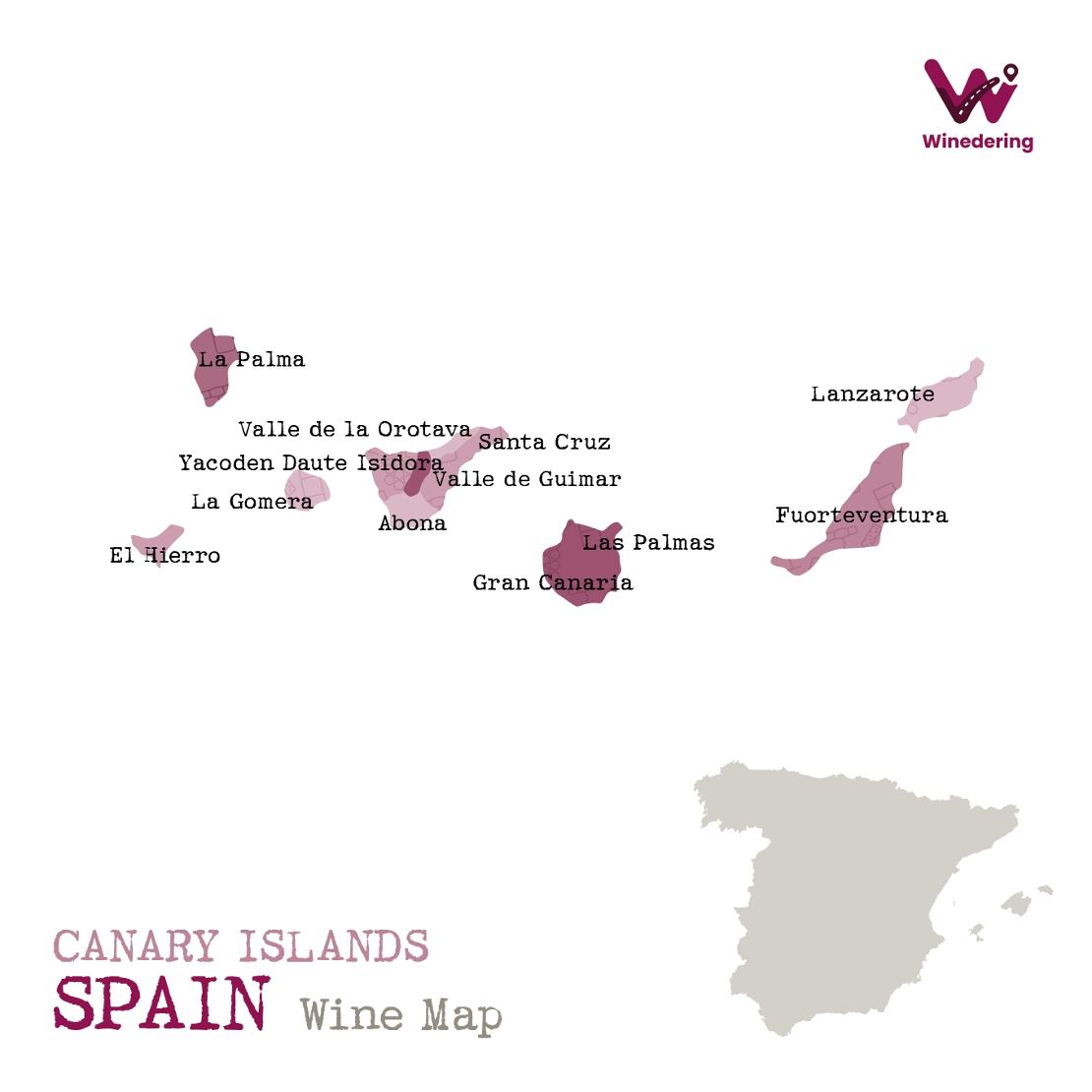
Wine production in the Canary Islands takes place on several islands, each with its unique terroir and grape varieties. The main islands known for wine production are:
-
Tenerife: The largest producer of wine in the Canary Islands. It is home to five Denominations of Origin (DOs): Abona, Tacoronte-Acentejo, Valle de Güímar, Valle de la Orotava, and Ycoden-Daute-Isora. Tenerife is known for its volcanic soils and indigenous grape varieties like Listán Blanco and Listán Negro.
-
Lanzarote: Known for its unique winegrowing technique where vines are planted in volcanic pits to protect them from strong winds. The island's main wine-producing area is under the DO Lanzarote. Malvasía Volcánica is the most famous grape here, producing distinctive white wines.
-
La Palma: Another island with a long tradition of winemaking, classified under the DO La Palma. The wines are grown on terraces due to the island’s steep terrain. Indigenous grape varieties like Negramoll and Listán Blanco are prominent here.
-
Gran Canaria: The DO Gran Canaria encompasses the wine production on this island, which has seen a revival in recent years. The island grows varieties like Listán Negro, Albillo, and Malvasía.
-
El Hierro: The smallest of the wine-producing islands, with its DO El Hierro. The island's wines are largely made from grapes like Verijadiego Blanco and Negro, along with Listán varieties.
-
La Gomera: A smaller wine-producing region, classified under the DO La Gomera. The island focuses on producing wines from indigenous varieties such as Forastera Gomera.
-
Fuerteventura: While Fuerteventura doesn’t have a formal DO, there is some limited wine production on the island, mainly focused on smaller vineyards and local consumption.
Known for their breathtaking natural beauty, the islands have become a sanctuary for wine production, combining ancient viticulture traditions with modern winemaking techniques. The volcanic soils and the variety of microclimates across the islands create ideal conditions for cultivating unique grape varieties that thrive in this rugged terrain.
The winemaking history of the Canary Islands dates back to the 15th century when European settlers first brought grapevines to the islands. Since then, the islands have developed a reputation for producing wines with intense flavors, rich minerality, and a true expression of their volcanic terroir.
Although the islands are small in scale compared to mainland Spain's major wine regions, they boast an impressive diversity of wines, particularly notable for the production of volcanic whites and fresh, aromatic reds. Each island contributes its own distinct style, with Tenerife and Lanzarote leading the way in wine production. The islands produce around 10 million bottles annually, a fraction compared to larger Spanish regions, but their wines hold a special allure for those seeking something extraordinary.
These islands benefit from the volcanic soils and mild climate, resulting in wines with unique minerality and fresh, vibrant flavors.
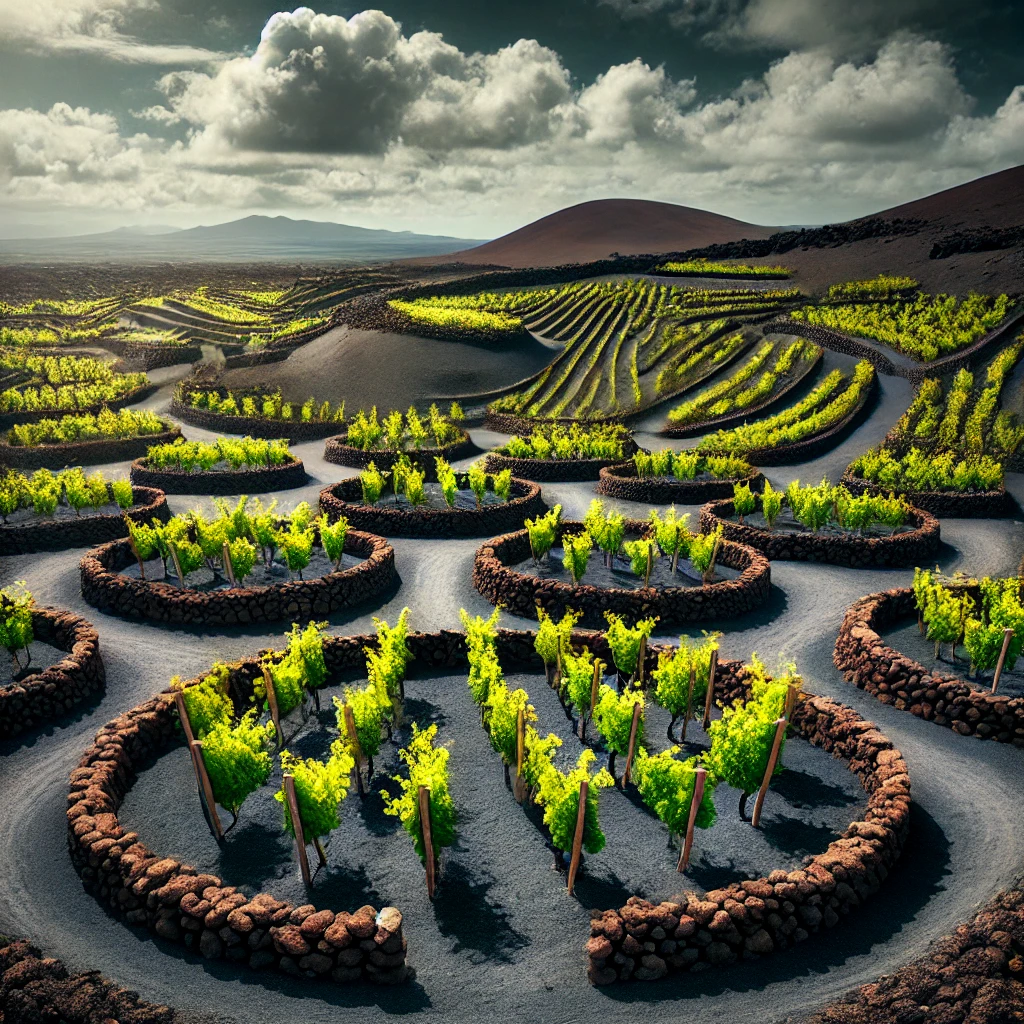
How To Reach the Canary Islands
The Canary Islands offer visitors stunning scenery and a wealth of activities. From hiking through volcanic landscapes to exploring historic towns and relaxing on the islands’ black-sand beaches, the archipelago provides a range of experiences for travelers. Visitors can explore picturesque villages, visit natural parks like Teide National Park in Tenerife, or simply soak in the laid-back island life that blends rural charm with rich cultural traditions.
A trip to the Canary Islands would not be complete without visiting one of the many local wineries, where you can discover the craftsmanship behind their volcanic wines. These wine estates offer guided tours, tastings, and a chance to learn about the centuries-old techniques used to produce these distinctive wines. Whether it’s savoring a crisp Malvasía Volcánica on Lanzarote or enjoying a bold red from Tenerife, the Canary Islands promise a unique and unforgettable wine experience.
Here is our suggestion for a trip to the Canary Islands that offers the perfect blend of wine and nature, showcasing the remarkable diversity and beauty of the Canary Islands:
Begin your journey in Tenerife, where the island’s dramatic volcanic landscape meets its thriving wine culture. Start in the lush northern region, exploring the historic town of La Laguna before heading into the Tacoronte-Acentejo wine region. This area is known for its fertile volcanic soils, where you can visit family-run wineries producing exceptional red and white wines from local varieties like Listán Negro and Blanco. As you travel, take in the sweeping views of the Atlantic and the iconic Mount Teide in the distance.
Continue your exploration by driving towards Teide National Park, where you’ll witness the otherworldly beauty of volcanic craters and ancient lava fields. The national park offers stunning panoramas and hiking trails, with its crown jewel, Mount Teide, towering above. After soaking in the rugged beauty, descend towards the Orotava Valley, another important wine region. Here, you can visit wineries known for producing elegant wines that reflect the island’s unique terroir.
After exploring Tenerife, fly to Lanzarote, an island famed for its surreal landscapes shaped by volcanic eruptions. Begin your journey in the heart of the island’s wine country, La Geria, where vineyards grow in black volcanic ash. Marvel at the sight of vines planted in circular stone pits, designed to protect them from the wind, and visit local bodegas producing the island’s renowned Malvasía Volcánica wines.
As you journey through Lanzarote, balance your wine tastings with visits to the island’s natural wonders, such as Timanfaya National Park. Explore the lunar-like landscape, shaped by centuries of volcanic activity, where you can experience geothermal demonstrations and admire the fiery beauty of the island’s volcanoes.
Conclude your trip with a visit to the northern part of Lanzarote, where the stunning views from Mirador del Río offer a breathtaking vantage point over the Atlantic and neighboring islands. End your journey by tasting more of Lanzarote’s wines, which capture the essence of its volcanic soil.
Flights
Reaching the Canary Islands is simple and convenient, with two major international airports serving as key gateways. Tenerife South Airport (TFS) is the primary hub for Tenerife, offering direct flights from numerous European cities and long-haul destinations. Located near the island's popular tourist areas, TFS makes it easy to begin your exploration of Tenerife’s stunning landscapes and renowned wine regions.
Alternatively, Tenerife North Airport (TFN) provides another option, especially for those flying from within Spain or other Canary Islands. Situated closer to the island's northern wine regions, such as Tacoronte-Acentejo, it’s an ideal starting point for exploring Tenerife’s viticulture and volcanic beauty.
For Lanzarote, Lanzarote Airport (ACE) is the main entry point, offering flights from a variety of European destinations. Located just outside the capital, Arrecife, it’s a short drive to the island’s famous wine region, La Geria, as well as its natural wonders like Timanfaya National Park. Whether flying directly into Tenerife or Lanzarote, both islands are well-connected by ferry, making it easy to explore multiple islands during your visit.
In addition to Tenerife and Lanzarote, other Canary Islands also have airports, making inter-island travel and connections from the mainland easy. Gran Canaria Airport (LPA) is one of the largest and busiest in the archipelago, serving international flights and connecting visitors to the island’s wine regions. La Palma Airport (SPC), El Hierro Airport (VDE), La Gomera Airport (GMZ), and Fuerteventura Airport (FUE) all provide access to their respective islands, making it convenient to explore the entire archipelago and its diverse wine offerings. Whether flying directly into Tenerife, Lanzarote, or one of the other islands, the Canary Islands are well-connected, ensuring a smooth and memorable journey through these volcanic islands.
Car / Ncc
If you choose to rent a car upon arriving in Tenerife, it’s an excellent way to explore the island’s diverse landscapes and wine regions at your own pace. From Tenerife South Airport (TFS), the drive to the island’s key wine areas in the north, such as Tacoronte-Acentejo, is approximately 80 kilometers (50 miles) and takes around 1 to 1.5 hours, depending on traffic and your route. The journey offers stunning coastal and volcanic views as you ascend towards the lush vineyards.
For those starting from Lanzarote Airport (ACE), renting a car is also a fantastic way to explore the island’s striking landscapes and La Geria wine region. The drive from the airport to La Geria is about 20 kilometers (12 miles) and takes around 20 to 30 minutes, passing through the island’s unique volcanic scenery. Whether on Tenerife or Lanzarote, having a car allows you to fully experience the islands' wineries and natural beauty.
How to visit Wineries on Canary Islands
Exploring Tenerife's wine regions and its unique volcanic vineyards is an unforgettable experience for any wine lover, and there are several ways to ensure you make the most of your visit.
For those who prefer a curated and immersive experience, booking a guided wine tour is an ideal choice. The Grapeline Experience Wine Tour in Tenerife offers just that—an expertly designed journey through the island’s stunning wine regions. This tour includes transportation, guided visits to select wineries, and tastings of Tenerife's finest wines, showcasing the unique flavors of the volcanic terroir. Along the way, you’ll have the chance to explore scenic viewpoints, enjoy local delicacies, and learn about the island’s rich winemaking traditions.
Now, let’s take a closer look at what the Grapeline Experience tour has to offer through Winedering in Tenerife’s volcanic wine region.
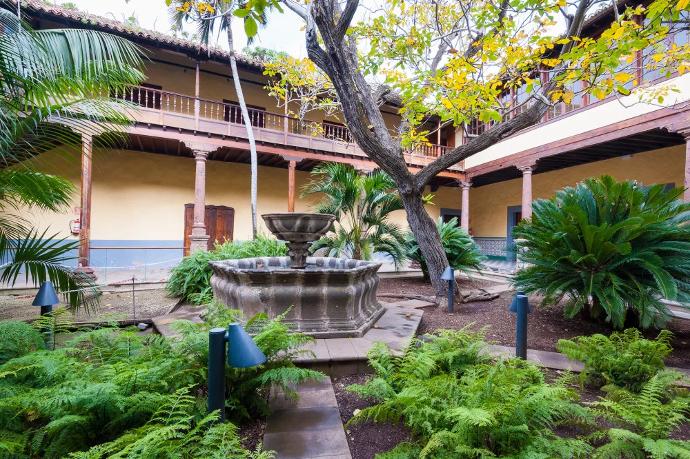
Grapeline Experience - Wine Tour in Tenerife
Embark on a full-day wine tour in Tenerife and immerse yourself in the rich flavors and heritage of the Canary Islands. Begin your journey in the World Heritage City of La Laguna, renowned for its stunning architecture and historical charm. Continue to El Sauzal, where you’ll visit the Casa del Vino Wine Museum. Here, indulge in a tasting of local cheeses, dates, and two exquisite Tenerife wines, while learning about the island’s winemaking traditions in a beautifully restored cellar.
Next, head to Bodega Monje, a picturesque winery offering breathtaking views of the Tacoronte Valley and the Atlantic Ocean. Enjoy a four-course Canarian lunch at the winery’s ocean-view restaurant, each course perfectly paired with a different local wine. Along the way, soak in some of the island’s most stunning northern landscapes, making this experience ideal for wine lovers eager to explore Tenerife’s unique volcanic terroir and rich culinary culture.
Canarian Wine & Food
Wine Production
Wine production in the Canary Islands is deeply influenced by the region’s volcanic soils, unique microclimates, and centuries-old traditions. The islands are home to a variety of native grape varieties that have adapted to the harsh yet fertile environment, with some of the vines being pre-phylloxera, offering a rare glimpse into ancient viticulture. Key indigenous grapes like Listán Blanco, Listán Negro, and Malvasía Volcánica define the region’s wines, while other varieties such as Negramoll, Baboso Negro, and Verdello contribute to a diverse range of still and sparkling wines.
After the winemaking process, the wines of the Canary Islands often undergo aging in neutral vessels such as steel tanks, concrete vats, or amphoras to preserve the fresh, mineral-driven flavors. The moderate subtropical climate and the cooling trade winds also help balance the ripening process, creating wines with bright acidity and complexity.
The Canary Islands offer a wide array of wine styles that reflect their volcanic origins and microclimates:
-
Malvasía Volcánica: One of the most famous grapes of the islands, particularly from Lanzarote, this white variety is known for producing aromatic, full-bodied wines with floral and tropical fruit notes, along with a distinct minerality from the volcanic soils.
-
Listán Blanco: Widely planted across the islands, this white grape is often used in both still and sparkling wines. It produces wines with crisp acidity, citrus notes, and a characteristic smoky minerality from the volcanic terroir, making it an ideal match for the island’s seafood cuisine.
-
Listán Negro: A versatile red grape, Listán Negro is responsible for many of the Canary Islands’ light, fresh reds, with bright red fruit flavors, herbal notes, and volcanic earthiness. It is often vinified in a youthful style, highlighting its vibrant acidity and light tannins, though it can also be made into more structured, age-worthy wines.
-
Negramoll: This red grape, prevalent in Tenerife and La Palma, produces elegant wines with delicate fruit flavors and subtle earthy undertones. It is often used in blends or as a single varietal to create medium-bodied reds with good aging potential.
-
Baboso Negro: A lesser-known but rising star in the Canary Islands, Baboso Negro produces bold, intense red wines with dark fruit flavors, spicy undertones, and a rich, velvety texture. Its deep color and complexity make it a favorite for those seeking fuller-bodied wines from the islands.
Canary Island Whites: The islands produce a variety of refreshing white wines from grapes like Albillo Criollo and Verdello, offering flavors ranging from citrus and tropical fruits to saline and volcanic mineral notes. These wines often exhibit bright acidity and a clean, fresh finish.
Canary Island Reds: The red wines of the Canary Islands, particularly from Tenerife and La Palma, are known for their vibrant fruit, earthy minerality, and balanced acidity. Grapes like Tintilla, Vijariego Negro, and Listán Negro are commonly used to craft reds that range from light and easy-drinking to bold and structured.
Sparkling Wines: While less common, some winemakers in the Canary Islands are producing sparkling wines using traditional methods. These wines often incorporate native varieties like Listán Blanco, offering a distinct volcanic twist on classic sparkling styles, with crisp acidity and subtle minerality.
The diversity of wine styles in the Canary Islands, combined with their volcanic character, creates an unforgettable experience for wine enthusiasts seeking something truly unique. From the mineral-driven whites to the bold reds, the wines of the Canary Islands reflect the islands’ rugged, volcanic landscape and centuries of viticultural tradition.
Every year in September, Tenerife hosts the Gran Fiesta de Vinos on the beautiful Playa de El Socorro in Los Realejos. This unique wine festival celebrates the island’s rich wine tradition, bringing together local winemakers and wine enthusiasts for an unforgettable experience by the beach. Attendees can enjoy tastings of Tenerife’s finest wines, paired with local cuisine, all while taking in the stunning coastal views. The festival provides a perfect blend of wine, food, and the relaxed island atmosphere.
Canarian Gastronomy
The Canary Islands offer a rich gastronomic experience, deeply influenced by their volcanic soils, oceanic surroundings, and agricultural heritage. From flavorful mojo sauces to fresh seafood and hearty stews, Canarian cuisine pairs beautifully with the islands' diverse wines, including the famed Malvasía Volcánica and Listán Negro varieties.
Whether enjoying a meal at a rustic guachinche (local eatery) or a modern restaurant in one of the islands' many wineries, visitors will be treated to the authentic flavors of the Canary Islands. Here are some traditional Canarian dishes that perfectly complement the region's unique volcanic wines:
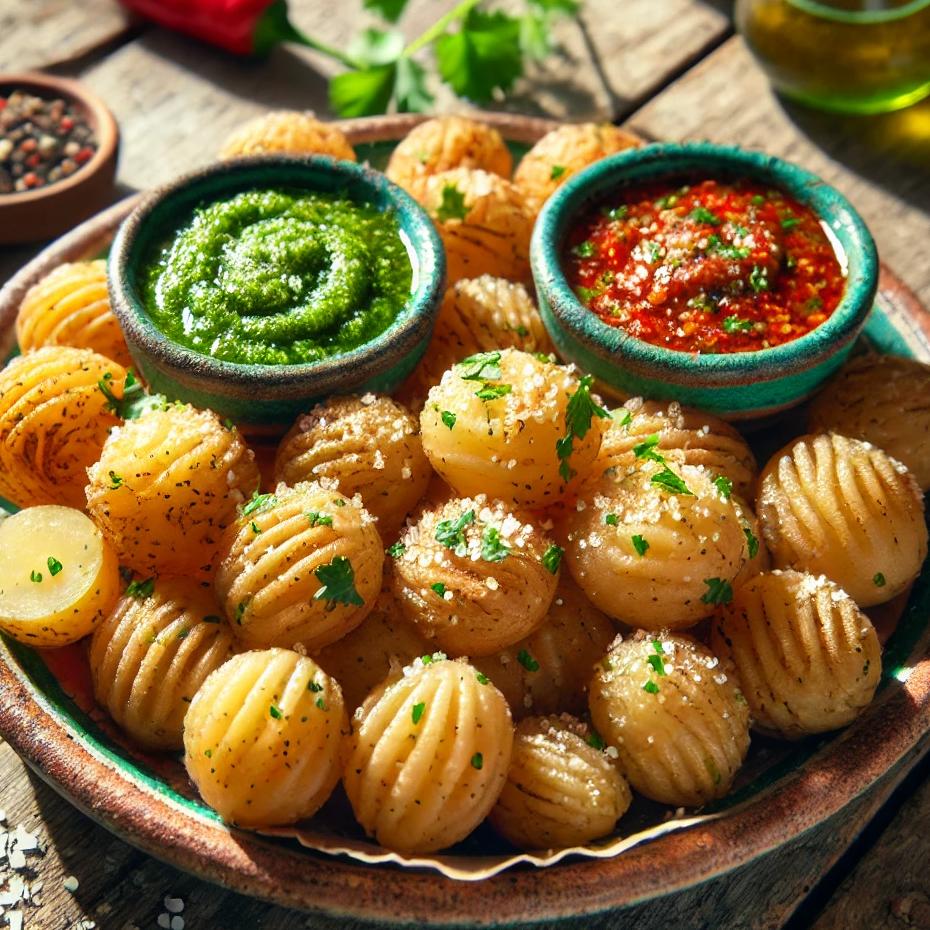
Papas Arrugadas con Mojos
The fresh, citrusy character of Listán Blanco complements Papas Arrugadas, small wrinkled potatoes served with mojo verde and rojo sauces. The wine's acidity cuts through the rich, earthy flavors of the potatoes and the bold, spicy sauces.
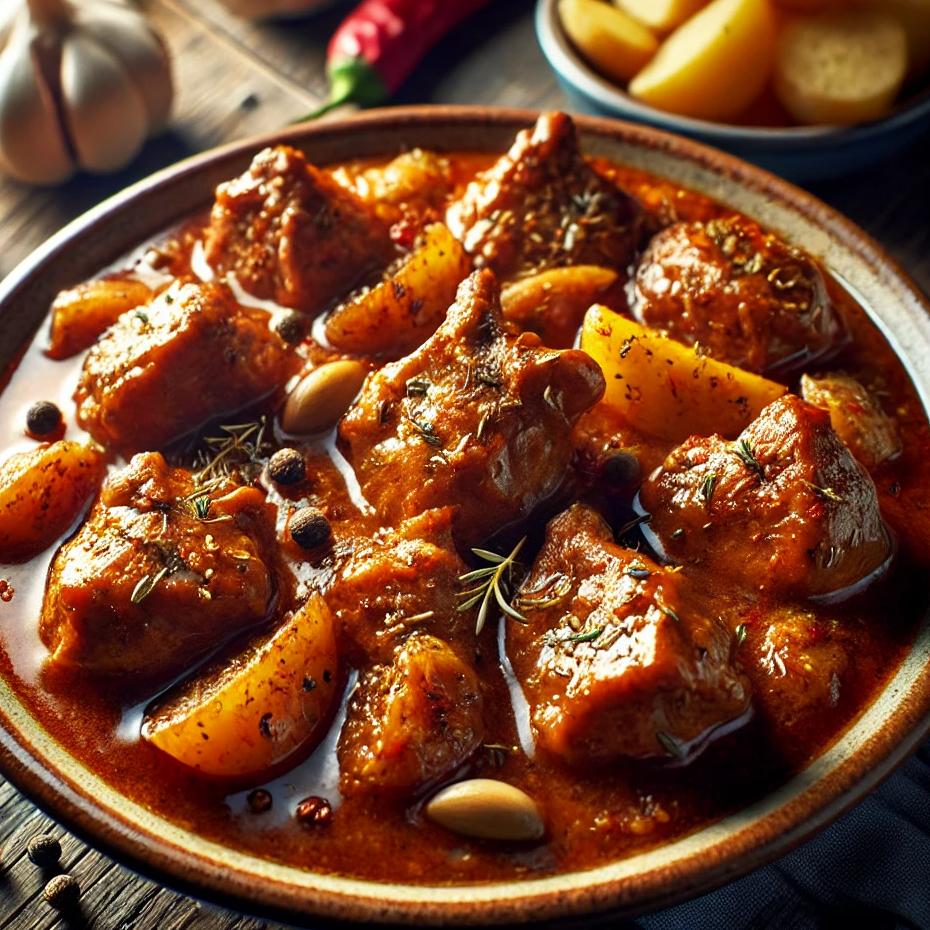
Conejo en Salmorejo
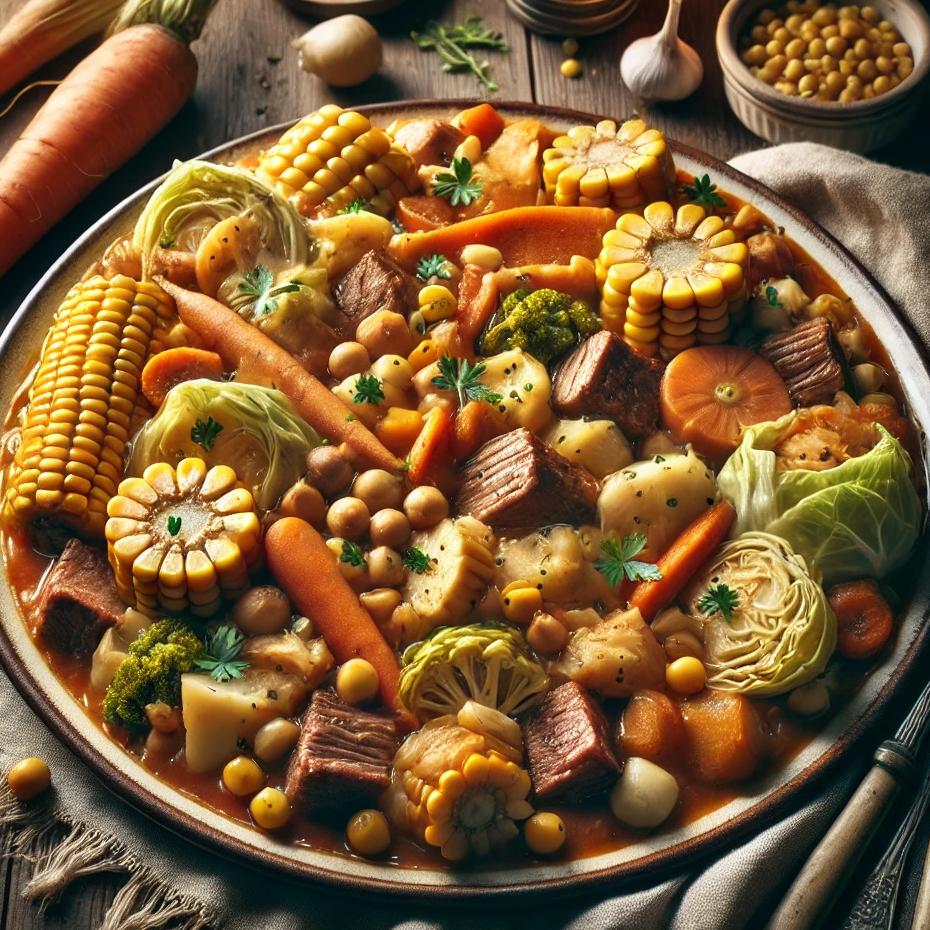
Puchero Canario
The elegant, medium-bodied Negramoll (La Palma) complements Puchero Canario, a hearty stew made with meats, chickpeas, and vegetables. The wine's smooth texture and red fruit flavors enhance the comforting, rich flavors of this traditional dish.
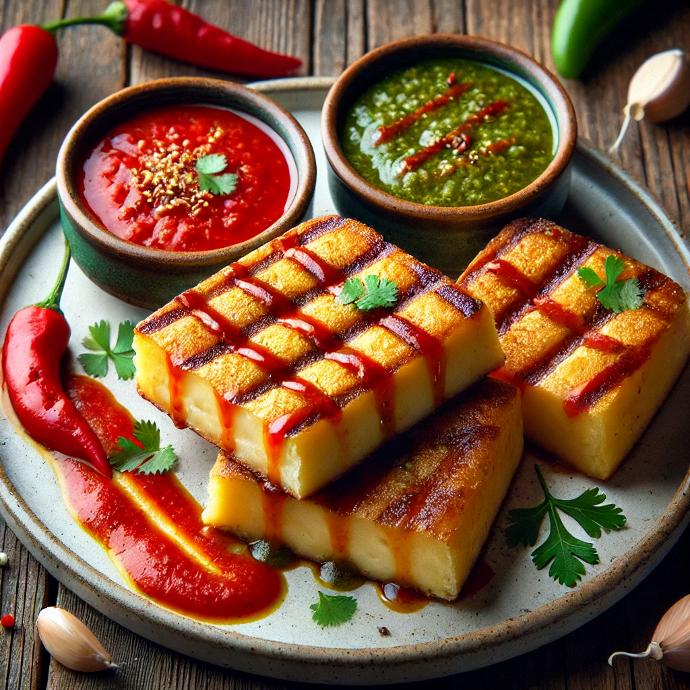
Queso Asado con Mojos
Baboso Negro, a bold and intense red wine, pairs wonderfully with Queso Asado, grilled Canarian cheese drizzled with mojo sauce and palm-tree honey. The smoky and spicy notes of the cheese are elevated by the wine’s deep, dark fruit flavors and velvety tannins.
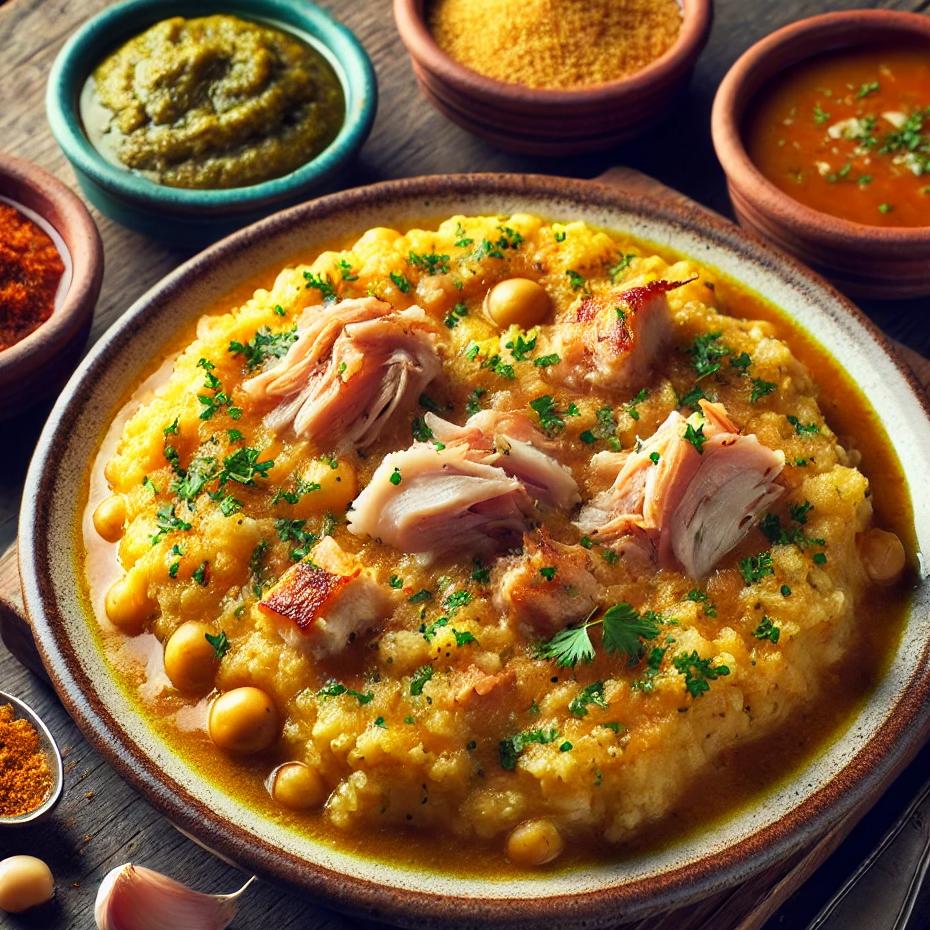
Escaldón de Gofio
The tropical and herbal character of Marmajuelo pairs well with Gofio Escaldado or Escaldón de Gofio, a traditional dish made from roasted grain flour mixed with fish broth. The wine's vibrant acidity and floral notes harmonize with the earthy, slightly nutty flavors of the gofio.

Polvito Uruguayo
Polvito Uruguayo paired with Malvasía Dulce is a match made in heaven. The sweet, honeyed notes of the wine perfectly complement the rich layers of dulce de leche, whipped cream, and meringue, while its bright acidity balances the dessert’s creamy richness, creating a harmonious and indulgent experience.
Top 3 Wine Experiences
Here are our top 5 recommendations for wine experiences in the Canary Islands, carefully selected by Winedering, the world's most popular wine and food experiences marketplace. These experiences, booked by thousands of customers, are the ones we highly recommend for creating unforgettable moments.
Outstanding Wine Tasting & Cheese Pairing at Bodega Monje
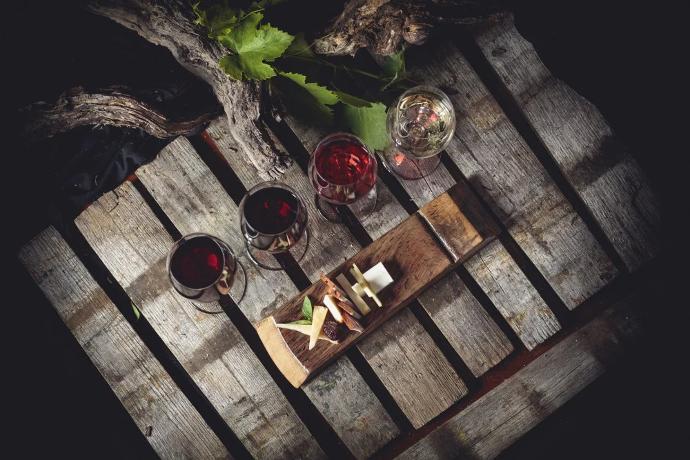
Visit Bodega Monje and explore the distinctive flavors of wines crafted from indigenous grapes grown on volcanic soil. This guided experience includes a tour of the winery and a tasting of four unique wines, each paired with a local cheese. Enjoy a glass of Dragoblanco paired with fresh white goat’s cheese from Tenerife, Hollera paired with smoked goat’s cheese from La Palma, MonjeTradicional with semi-cured peppery goat’s cheese from Fuerteventura, and Listán Negro, aged in barrels, with cured goat and sheep cheese from Gran Canaria. A true treat for the senses!
Rating: 4.5/5
Experience type: Wine tasting
Ideal for: Solo travelers, couples, friends, small groups
Premium Tasting and Guided Tour at Bodegas El Sitio in Tenerife
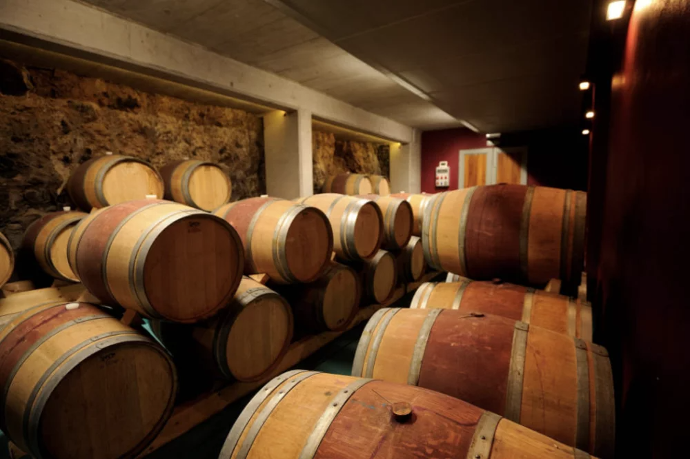
Discover the essence of Tenerife at Bodegas El Sitio with a premium wine tasting and guided tour. Begin with a visit to the vineyard and cellar, where you'll learn about the meticulous process of winemaking, from grape cultivation to fermentation and aging, all while enjoying stunning views of the Teide and the sea. After the tour, indulge in a tasting of two premium wines—a crisp Malvasia white and a rich red—paired with locally sourced cheeses and charcuterie. Immerse yourself in the unique flavors and culture of the island during this unforgettable experience.
Experience type: Cellar visit & tasting
Ideal for: couples, groups up to 20 participants
Wine Experience and Mojo Workshop at Bodega Monje
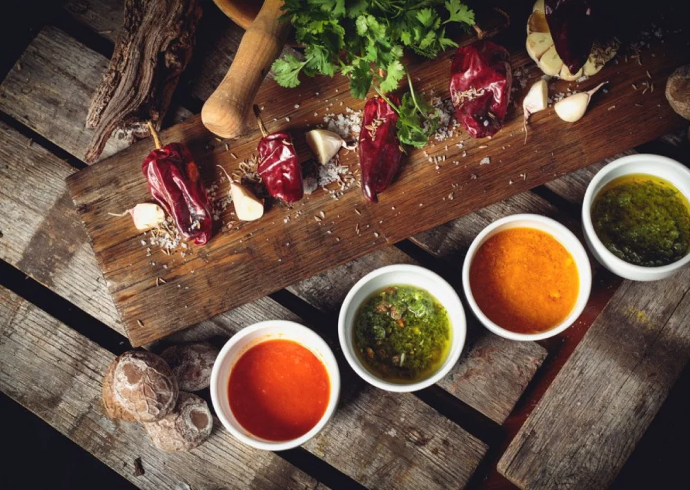
Visit Bodega Monje for a unique experience that combines the best of Canarian cuisine and wine. Participate in an entertaining Mojo Picón and Canarian Potatoes workshop, where you'll learn to prepare one of the Canary Islands' famous sauces, made with ingredients like coriander, parsley, or pumpkin, under the guidance of a local chef. After the workshop, enjoy a tour of the winery followed by a tasting of three of Bodega Monje's young wines. The tasting is paired with freshly baked bread topped with delicious spreads, thinly sliced cheese on toast, and traditional Canarian potatoes with mojo sauce. This is the perfect blend of culinary culture and winemaking!
Experience type: cellar visit, wine tasting & workshop
Ideal for: solo travelers, couples, groups up to 6 participants
Itineraries and Wine Tours
in Canary Islands
If you need some inspiration for your next trip or looking to adjust your current reservations in Tenerife check out ou itinerary recommended by Winedering. The Winedering team has meticulously curated these tours to offer an exceptional experience.
Tour #1: Half-Day Premium Volcanic Wine Tour from Santa Cruz de Tenerife
Immerse yourself in the volcanic landscapes of Tenerife on this captivating half-day tour, including visits to two remarkable wineries. Throughout the day, you'll savor many distinct wines, each perfectly paired with local delicacies, offering a true taste of the region’s rich flavors.
/
11.25 am
At 11 am, depart from Santa Cruz de Tenerife by car or private driver.
/
12.30 pm
Transfer to El Monje at 12.40 pm. The ride takes about 15 minutes.
/
2.30 pm
Visit Bodegas Monje and immerse yourself in the unique flavors of wines crafted from indigenous grapes grown in volcanic soil. Enjoy a guided tour of the winery, where you'll learn about the winemaking process and the heritage of our pre-phylloxera vineyards. Afterward, indulge in a tasting of four distinctive wines, each perfectly paired with a variety of local cheeses, offering a true taste of the Canary Islands.
/
3.30 pm
Head to Icod de los Vinos where you will discover little local shops with a great variety of local products and wines. Total duration: around 5 hours.
Enjoy Wine Experiences in
the Canary Islands
With detailed itineraries and insider tips, your adventure through the Canarian wine regions will be both seamless and enriching.
Remember to take your time, enjoy the stunning views, and soak in the warm hospitality of the local winemakers and residents. Here's to many memorable wine experiences in the Canary Islands, that you can easily book online on Winedering.com, the best online wine tourism marketplace worldwide.
Buen Viaje and salud to an unforgettable adventure in the Canary Islands!